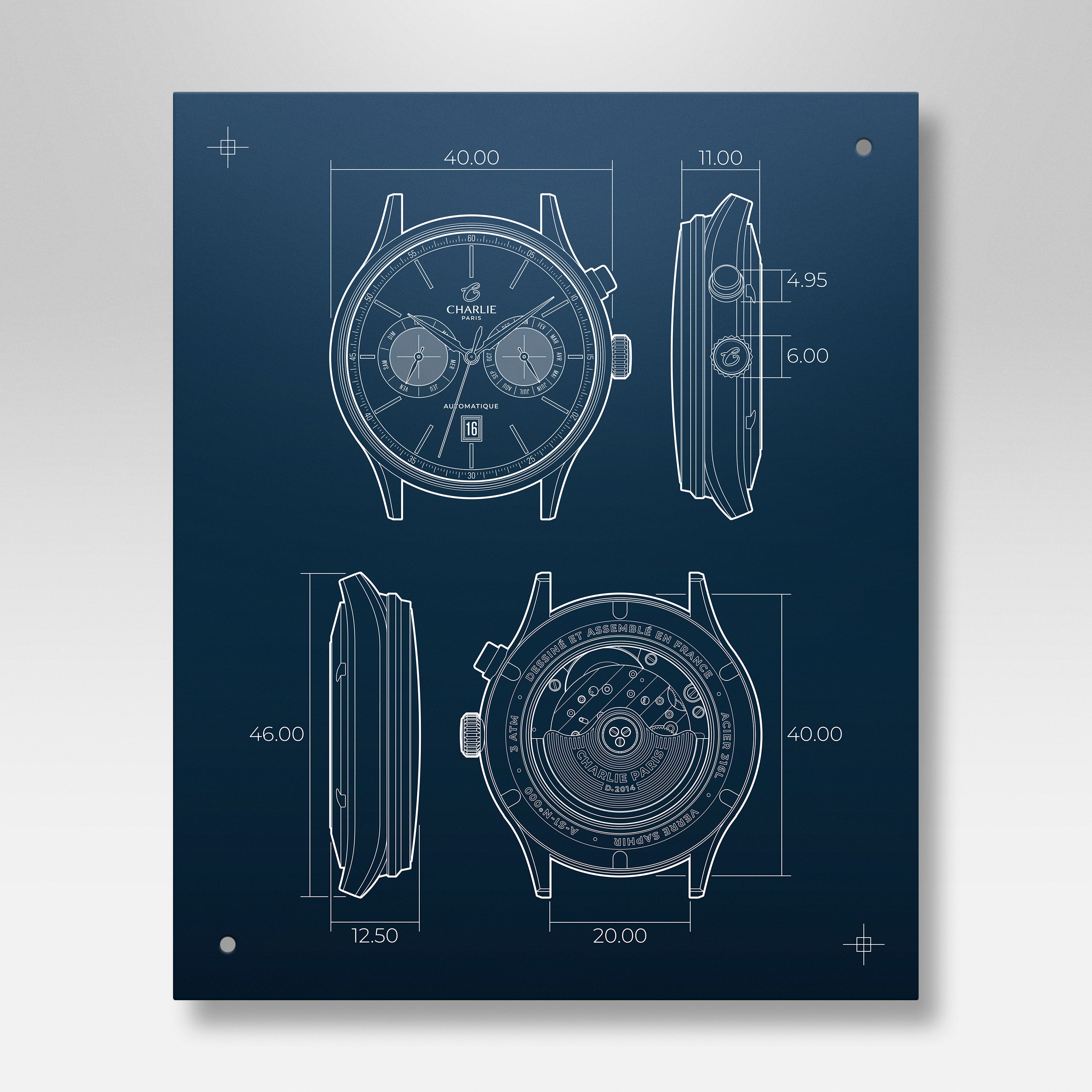
The watch mechanisms you must know
In the watch industry, there are many types of watches. You will find various models of watches that are distinguished by their design, size, color or mechanism. It is important to pay attention to the heart of your watch in order to better understand how it works. Moreover, knowing the different models of watches will help you in your next watch purchase. That's why Team Charlie presents you today the different watch mechanisms to know.
The mechanical watch with manual winding
Mechanical watches with manual winding are the oldest type of watch mechanisms. This type of watch has a mechanism that must be charged with energy by winding the watch. The winding mechanism allows a spring to be tensioned, which, when relaxed, will cause the hands to move. Also known as manual movements, this mechanism requires daily winding by means of the crown to ensure optimal operation. The watch is wound to its maximum when you can no longer turn the crown. The manual movement is the oldest watch movement and therefore the most authentic. It is appreciated by watch enthusiasts for its history and craftsmanship. However, the fact that manual wind watches have to be rewound frequently may discourage those who are looking for practicality.
The mechanical automatic-winding watch
Watches with automatic mechanical movements, called automatic watches by most of us, each consist of a complex mechanism, just like manual movements. An automatic watch is recharged by the swing of the wearer's wrist. Indeed, the movements of his wrist cause a set of gears that activates the mechanism of the watch. Thanks to the integration of a rotor, which constantly winds up the main spring, automatic watches work without interruption. Unlike manual movements, self-winding mechanical movements do not require daily adjustment. Thus, as long as the automatic watch is worn, it will wind itself. Note that the self-winding watch has, like a manually wound watch, a power reserve of about 40 hours. This means that after this time, the watch will stop and you will have to use the crown to set it again.
The quartz watch with electronic movement
Watches with electronic movement are relatively recent compared to mechanical watches since they appeared in 1967. The electronic movement watches, called quartz men's watches, are the most common on the watch market. The main reason for this is the fact that this type of movement is accurate, reliable and offered at low cost. Quartz watches are less prestigious than mechanical watches, as they do not demonstrate the same watchmaking expertise. Unlike a mechanical watch, a quartz watch has very few parts and is simple to operate. A watch with an electronic movement is powered by a battery, so it is a far cry from the craftsmanship, watchmaking prowess and authenticity of automatic watches. This type of watch is not of great interest to watch lovers. The battery sends out an electric current, which then creates the vibrations that drive the movement. Specifically, the battery in a quartz watch supplies electrical energy to a quartz oscillator, which vibrates and sends out regular electrical impulses that turn the hands. A quartz watch is highly accurate but has a shorter life than a mechanical watch due to wear and tear on its electronic components. The battery of a quartz watch must be changed every 2, 3 or 5 years.
The quartz watch with solar movement
Solar powered movements are actually electronic movements but do not require a battery. In fact, solar quartz watches are quartz watches but instead of using a battery, they use solar sensors placed on the dial. This type of mechanism is powered by natural or artificial light (natural light allows for a faster charge), which is captured by the solar panel located on the dial and is subsequently transformed into electrical energy. This energy is then stored to guarantee the functioning of the watch, even without exposure to light for several months. Thus, it is possible to use this type of watch without it being systematically exposed to light. If you use this type of watch on a daily basis, you will not need to recharge it. To recharge your solar watch to its maximum, exposure to natural light for about 5 hours is sufficient. This practice is more environmentally friendly, allowing the solar watch to last longer without changing the battery.
The watch with kinetic quartz movement
Watches with kinetic quartz movements, also known as autoquartz, were invented by the Seiko watch company in 1988. This movement can be defined as a hybrid system between the quartz watch and the mechanical watch. These are quartz watches that have the particularity of operating without batteries. On the electronic movements, there is an oscillating mass that turns according to the movements of the wrist. These rotations create an electric current, whose energy is stored in a battery. Today, this type of movement is rare on the watch market and is not widely used by other watch brands.











Leave a comment
This site is protected by hCaptcha and the hCaptcha Privacy Policy and Terms of Service apply.